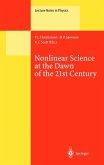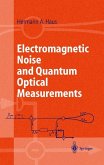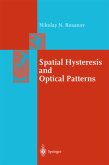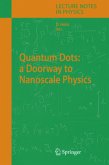Following the birth of the laser in 1960, the field of "nonlinear optics" rapidly emerged.
Today, laser intensities and pulse durations are readily available, for which the concepts and approximations of traditional nonlinear optics no longer apply. In this regime of "extreme nonlinear optics," a large variety of novel and unusual effects arise, for example frequency doubling in inversion symmetric materials or high-harmonic generation in gases, which can lead to attosecond electromagnetic pulses or pulse trains. Other examples of "extreme nonlinear optics" cover diverse areas such as solid-state physics, atomic physics, relativistic free electrons in a vacuum and even the vacuum itself.
This book starts with an introduction to the field based primarily on extensions of two famous textbook examples, namely the Lorentz oscillator model and the Drude model. Here the level of sophistication should be accessible to any undergraduate physics student. Many graphicalillustrations and examples are given. The following chapters gradually guide the student towards the current "state of the art" and provide a comprehensive overview of the field. Every chapter is accompanied by exercises to deepen the reader's understanding of important topics, with detailed solutions at the end of the book.
Today, laser intensities and pulse durations are readily available, for which the concepts and approximations of traditional nonlinear optics no longer apply. In this regime of "extreme nonlinear optics," a large variety of novel and unusual effects arise, for example frequency doubling in inversion symmetric materials or high-harmonic generation in gases, which can lead to attosecond electromagnetic pulses or pulse trains. Other examples of "extreme nonlinear optics" cover diverse areas such as solid-state physics, atomic physics, relativistic free electrons in a vacuum and even the vacuum itself.
This book starts with an introduction to the field based primarily on extensions of two famous textbook examples, namely the Lorentz oscillator model and the Drude model. Here the level of sophistication should be accessible to any undergraduate physics student. Many graphicalillustrations and examples are given. The following chapters gradually guide the student towards the current "state of the art" and provide a comprehensive overview of the field. Every chapter is accompanied by exercises to deepen the reader's understanding of important topics, with detailed solutions at the end of the book.
From the reviews: "This book is informative, well written, well referenced and relevant to all who study ultra-short pulse phenomena. The book comes with problems at the end of chapters and has examples throughout and would form the basis of an honours-level course in the field. This is a worthy inclusion to the library for those interested." (John Holdsworth, Australian Physics, Vol. 42 (5), 2005) "Very intense short-pulse lasers are available today ... . Starting with an introduction to the field ... later chapters guide the student towards the current state of the art. Exercises accompany each section with detailed solutions given at the end of the book." (Opto & Laser Europe, Issue 122, 2004) "This is a textbook aiming to teach students basic knowledge about phenomena induced by extremely short pulses of optical (electromagnetic) radiation, whose peak density is extremely large, hence the name of 'Extreme nonlinear optics'. ... The book offers the presentation of the material at two different levels of complexity, basic and advanced. The book also contains a large number of exercises, which lends it an extra pedagogical value." (Boris A. Malomed, Zentralblatt MATH, Vol. 1104 (6), 2007)








